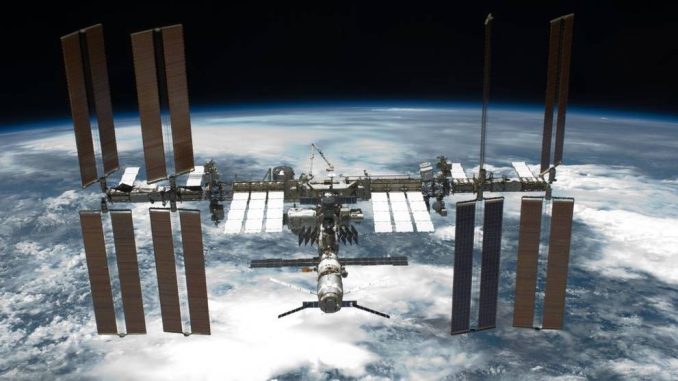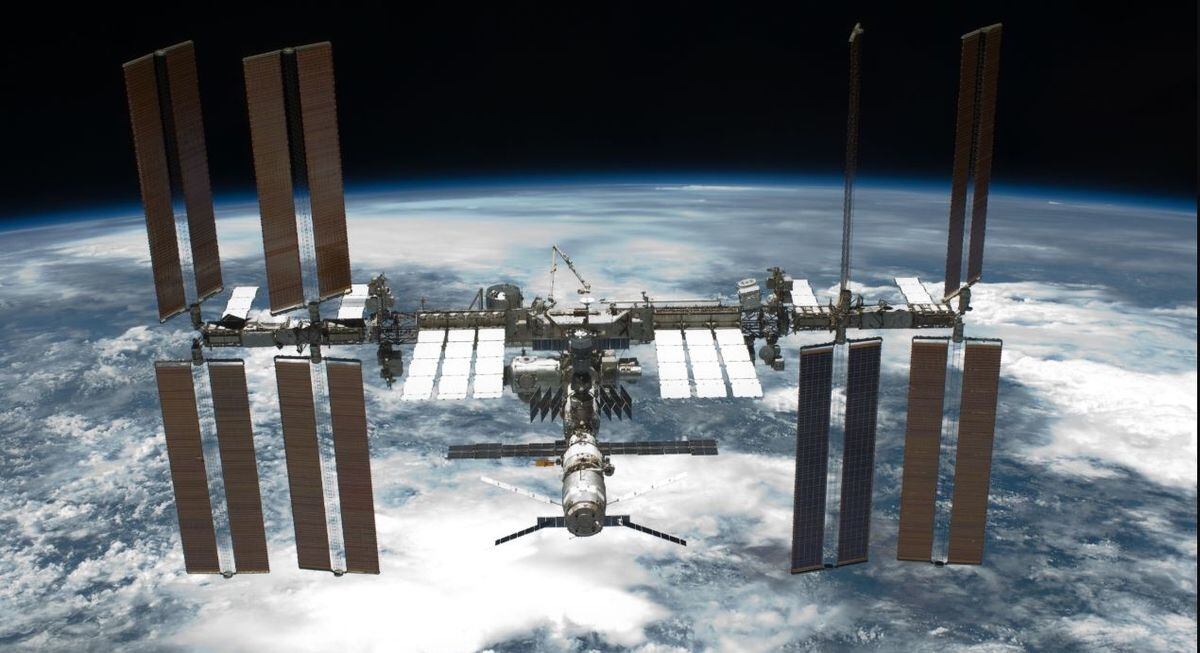

WASHINGTON — Russia destroyed one of its own satellites in an anti-satellite weapon test Nov. 15, according to the U.S. State Department, creating orbital debris that led astronauts on the International Space Station to take cover on several occasions.
“Earlier today the Russian Federation recklessly conducted aa destructive satellite test of a direct ascent anti-satellite missile against one of its own satellites. The test has so far generated over 1,500 pieces of trackable orbital debris and hundreds of thousands of pieces of smaller orbital debris that now threaten the interests of all nations,” State Department spokesperson Ned Price said during a Nov. 15 press briefing.
Astronauts and cosmonauts aboard the ISS were forced to take cover approximately every hour and a half as the station’s orbit intersected with that of the debris.
“Russia’s dangerous and irresponsible behavior jeopardizes the long-term sustainability of outer space and clearly demonstrates that Russia’s claims of opposing the weaponization of space are disingenuous and hypocritical,” said Price, adding that the State Department has repeatedly raised concerns over anti-satellite testing with Russia.
The anti-satellite, or ASAT, collision appears to have occurred in an orbit around 500 kilometers above the Earth’s surface, according to satellite trackers, and about 80 kilometers above the International Space Station’s orbit. However, an impact could have pushed debris into new trajectories that could threaten the ISS.
LeoLabs, a space debris-tracking company, identified the satellite in question as Cosmos 1408, noting that the debris was in the location it would expect the Russian satellite to be otherwise.
“We share the concern that our State Department colleagues stressed earlier today about this test,” said Pentagon Press Secretary John Kirby in a press briefing. “The most immediate concern is the debris itself, which is now floating out there and could become a hazard, including to the International Space Station. So there’s concerns about the debris itself. And obviously, you know, writ large we watch closely the kinds of capabilities that Russia has seems to want to develop, which could pose a threat not just to our national security interest, but the security of other space-faring nations. And again, we’ve been very clear: We would like to see norms for space so that it can be used responsibly by all space-faring nations.”
Kirby also told reporters that the Department of Defense did not receive an advance notice from Russia prior to the test.
This isn’t the first time that an alleged direct-ascent anti-satellite test resulted in dangerous debris. China tested an ASAT missile on one if its weather satellites in 2007, an event that resulted in thousands of pieces of debris. Nearly a decade later, debris-tracker CelesTrack put the number of pieces at almost 3,500, with only 571 pieces decaying.
More recently in 2019, India conducted an unexpected ASAT test, using a missile to destroy one of its own satellites in low Earth orbit. That test also created debris, although the government claimed that any debris would decay and fall out of orbit within weeks due to the low altitude of the test.
Unintended collisions in orbit can also result in debris. The last major collision of that type occurred in 2009, when an Iridium commercial communications satellite and a decommissioned Russian satellite collided in low Earth orbit, creating more than 2,000 pieces of trackable debris, according to the Secure World Foundation. That number doesn’t include smaller debris that is difficult or impossible to track, even though very small objects travelling at high speeds can still be dangerous to other spacecraft.
Russia has conducted multiple ASAT tests in recent years, according to U.S. Space Command, although those tests stopped short of hitting satellites on orbit. Other Russian space activities, such as operating in close proximity to American satellites on orbit and having one satellite eject a small object at high speeds on orbit, have also drawn condemnation from U.S. space officials.
Price said the U.S. would not tolerate such “reckless” activity from Russia, although he wouldn’t outline what measures the U.S. would take in response beyond collaborating with partners and allies.
Nathan Strout covers space, unmanned and intelligence systems for C4ISRNET.


Be the first to comment